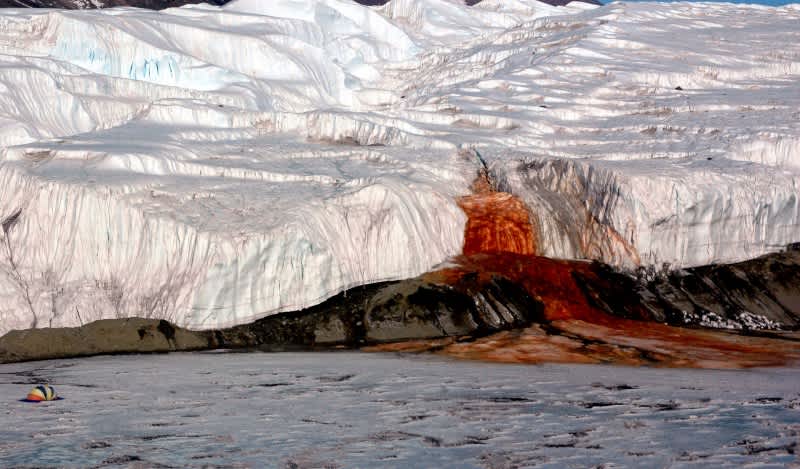Source of Antarctica’s “Bleeding Glacier” Found
OutdoorHub Reporters 04.30.15

Since 1911, explorers and visitors to the Taylor Glacier have wondered about the blood-red liquid that flowed from what has been dubbed “Blood Falls” in Victoria Land, Antarctica. Scientists originally attributed the phenomenon to red algae, but a new study has found that the liquid’s blood-like appearance is actually due to bacteria living within the brine flowing across the valley.
“This study shows Blood Falls isn’t just a weird little seep,” the study’s lead author, microbiologist Jill Mikucki, told Live Science. “It may be representative of a much larger hydrologic network.”
So what exactly is the liquid? According to the study, the area is crisscrossed by a network of underground rivers that connect scattered lakes across Taylor Valley. Estimated to be twice as salty as seawater, this briny water remains in liquid form despite being in temperatures well below freezing. It is believed that this network of channels is actually the remnant of an ancient sea that still contains microbial life. In fact, water samples from Blood Falls contained at least 17 different types of microbes, yet almost no oxygen. This may indicate that the microbes have a developed a new strategy to tap into ferric irons inside the brine and metabolize organic matter within—essentially eating through the ferric irons and staining the glacier red.
The researchers have since managed to recover samples of bacteria from inside the bleeding glacier, which they say could be vital to studying life on other worlds. The dark, frozen, and airless environment is comparable to that of Mars, which once had liquid water but has since frozen. The presence of bacteria living in such extreme environments has researchers optimistic that living microbes could still be present on other planets.
“Briny groundwater has been suggested as supporting a deep biosphere on Mars,” the researchers wrote in the study, adding that the study could prove useful for the future exploration of the red planet.
You can see a video of the probe in action below:

